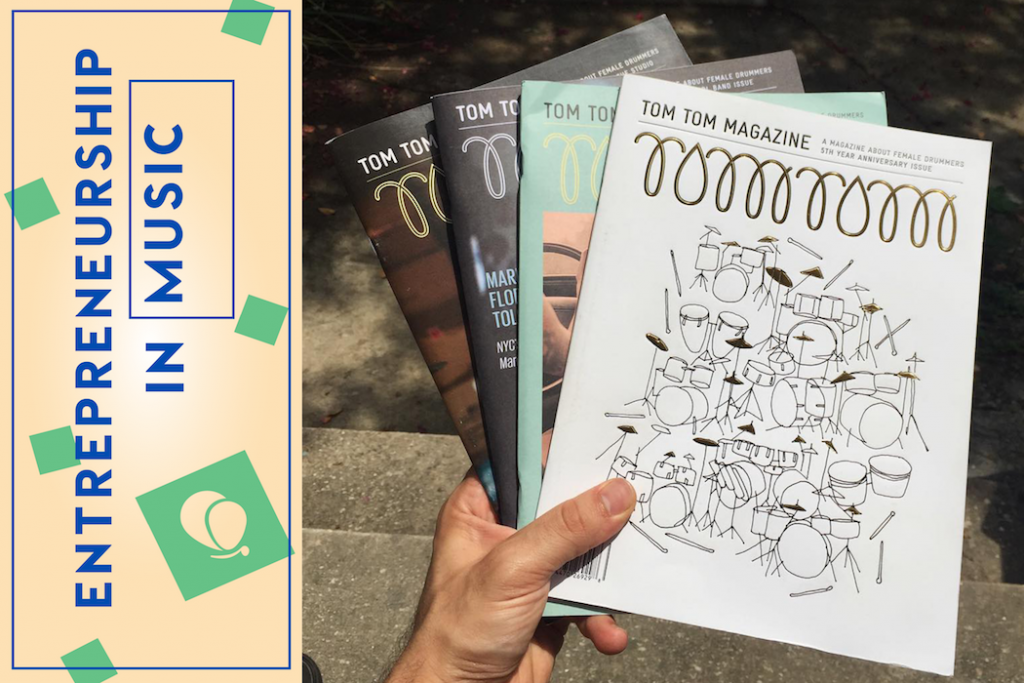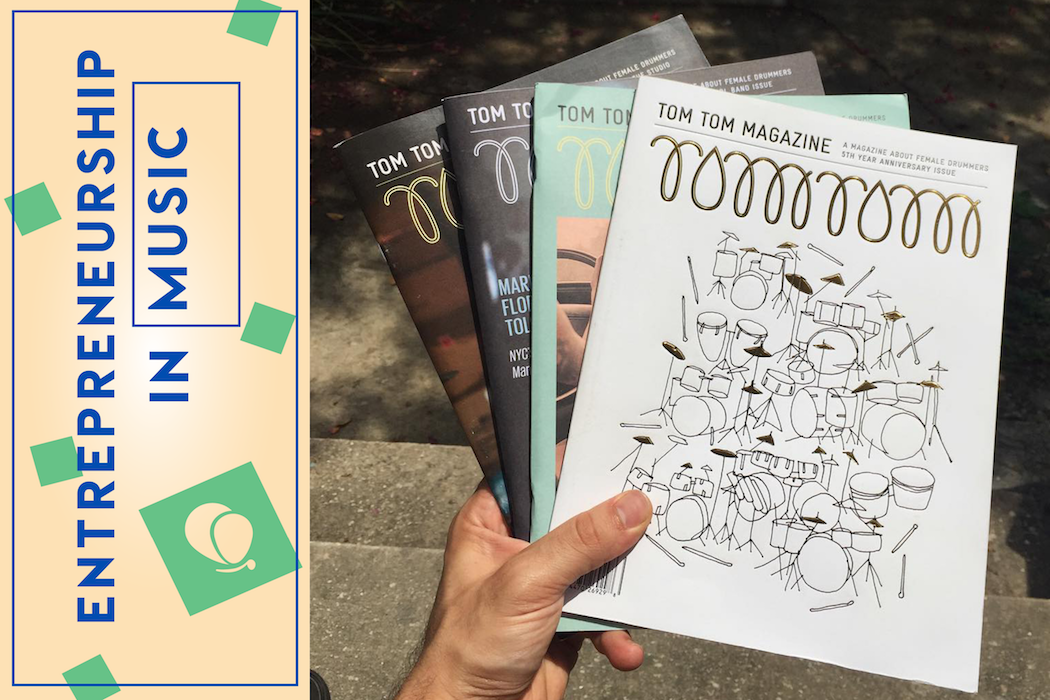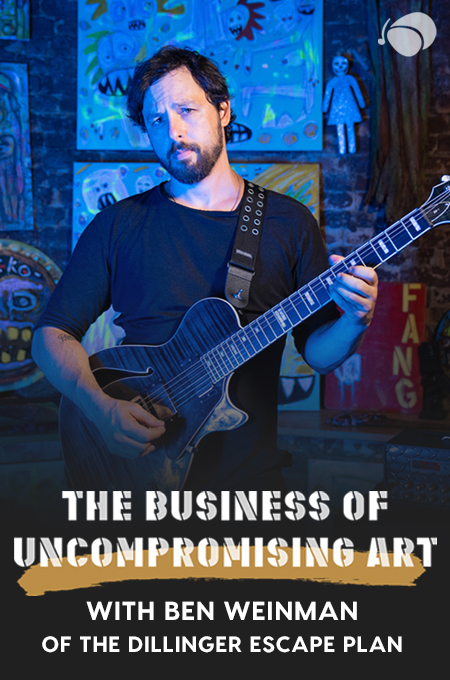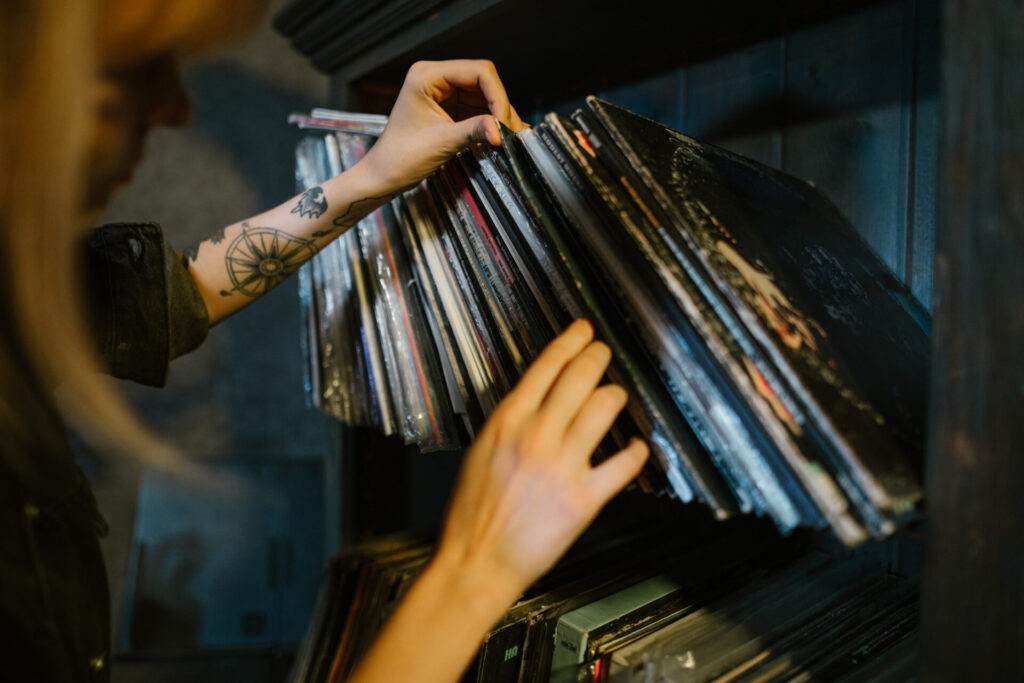Entrepreneurship in Music Series: 010
TOM TOM MAGAZINE
Founder and Publisher Mindy Seegal Abovitz
Tom Tom is, to the best of my knowledge, the only print magazine in the world focusing solely on women drummers and female drumming culture. It was founded in Brooklyn in 2009, and somehow in this age of dying publications, Tom Tom has managed not just thrive, but to expand its steadily growing following into a fully engaged worldwide community through the magazine, at events, and online. Tom Tom’s mission is to raise awareness and celebrate the amazing work of women and girl drummers everywhere. They work to inspire girls to take up the drums and make their voices heard loud and clear around the music industry.
The best part is that founder and publisher Mindy Abovitz and her staff are absolutely bonkers about what they do. They love their community more than anything, and so should you!
Click here for the full Entrepreneurship in Music series.
Why is Tom Tom’s mission to raise awareness about female drummers and create opportunities for girls to play drums such a passion for you?
I am a female drummer and I know what a struggle it can be to be taken seriously as a girl or woman musician. It’s hard enough playing music, and if you add on having to prove yourself all the time, it makes it even harder. I want to make it a touch easier for everyone to feel good about playing. I happen to be a woman, so I am working on what I know best and what I know to be true. I am also passionate about feminism and equality in general. I get most motivated by people behaving unfairly to each other and can see the fix that we need. I guess seeing a solution and knowing I could play a role in it drives my passion most.
How do you work to accomplish that goal?
I work on growing the magazine and our community and making our product the best one out there. I let our work speak for itself. We take ourselves seriously and have a lot of genuine agenda and talent behind our work. We are accomplishing our goal by filling a need.
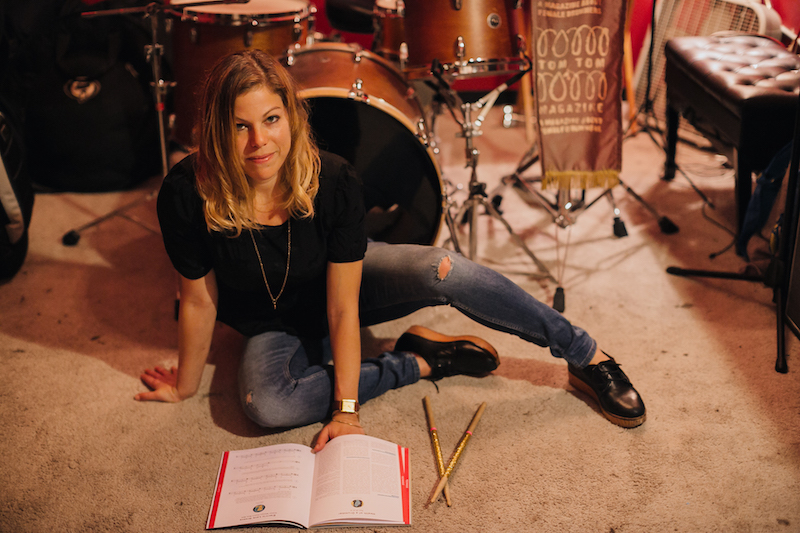
How did your network as an artist help to shape the culture of the magazine? Or help to kickstart its popularity?
My network was full of creatives previous to starting the magazine. I didn’t even realize how many talents my friends had until this all happened. Having a deep network of musician friends and colleagues was of course the kicker. At first, everyone involved in the backend of making the magazine was also a female drummer.
Tom Tom has managed to survive in an era where most magazines are going belly up. How have you been able to survive and, dare I say, thrive?
I believe our success has much to do with the need for this kind of media and the drive of those involved (myself included). Also, success can be defined in any number of ways. Starting a magazine when most were folding is an advantage. The world of print magazines was changing when we began (as were the Internet and social media) so we were able to be flexible when flexibility mattered most.
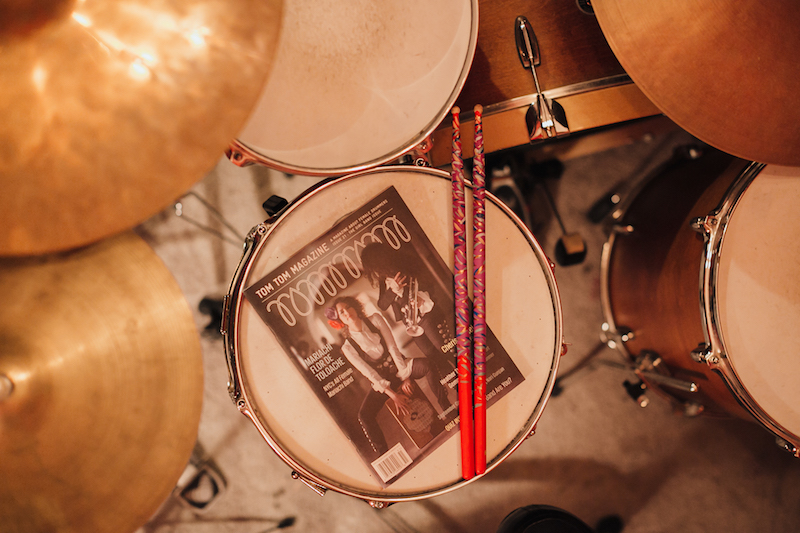
…And now the underlying question that plagues magazines, how do you stay afloat?
We have several revenue streams that we feed daily to grow the company, including but not necessarily limited to marketing, our online shop, events, speaking engagements, and magazine sales.
Is it sometimes difficult to sell advertisers on your platform?
Of course. Always. This has been an uphill battle since day one and that was to be expected. Each year gets easier though and that is exciting.
About how many subscribers do you have now?
We have a circulation of 90k. Which includes our subscribers and readers.
The Oral History of Female Drummers video (and the event it documented) is a great summation of the context through which the magazine arose. It’s also a really powerful call to action to rewrite the history books of popular music. Can you talk a bit about that event?
I am putting that particular performance on again at the Brooklyn Museum this March for First Saturday, and am thrilled about that.
We originally performed the piece at MoMA PS1 in Jan. 2013. It’s a performance piece is designed to explore and express the undocumented history of female drummers using the oral tradition of performative exchange.
It seeks to inspire and challenge the viewer with the images and experiences of female drummers by placing them in the meditative environment of our cultural museums.
The viewer is confronted with the stand alone existence of a female performer on an instrument that is commonly experienced as masculine and placed in the geographic background of the ensemble. The beat boxer is the oral historian who carries the beats from one drummer to another. Viewers are allowed to observe this intimate expression undistracted and to participate in both the immediacy, skill and mystery of this exchange. The beats represent a lost conversation of a history unknown, the language and voices unheard that can illuminate the current drum media and conversational landscape. The drummers are set up in different locations around the museum, both hidden and visibly featured. The traditional “mouth drummer” or beat boxer travels between these drummers to translate the beat or conversation between them.

Have you ever done anything just, bananas, for the Tom Tom community out there?
We once threw a meet up in the subway (Union Square) in NYC and invited over 100 female drummers to drum together underground. That was epic.
How much of the staff is a musician/DJ or is involved with making music?
Nearly all of us that work on Tom Tom are drummers. That is still mind blowing to me. It doesn’t feel imperative anymore but definitely doesn’t hurt. The most common thread that we all share is the desire to change media and see media reflect real people regularly. So beyond music making, all of us care to see social change happen.
What would be your best advice for aspiring musicians these days?
I would tell anyone, musician or non, to care about what you do and see. To take what you think is wrong in the world into your own hands and be a solution.
If you’re interested in hearing more about pioneering new music initiatives, check out the full Entrepreneurship in Music series!
